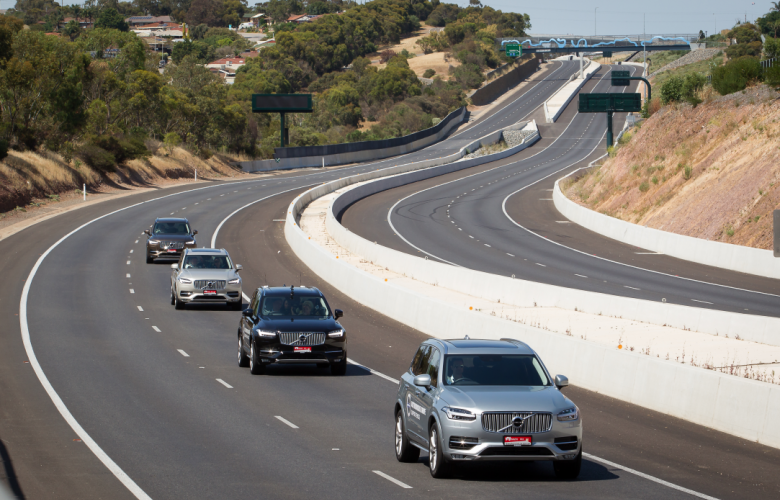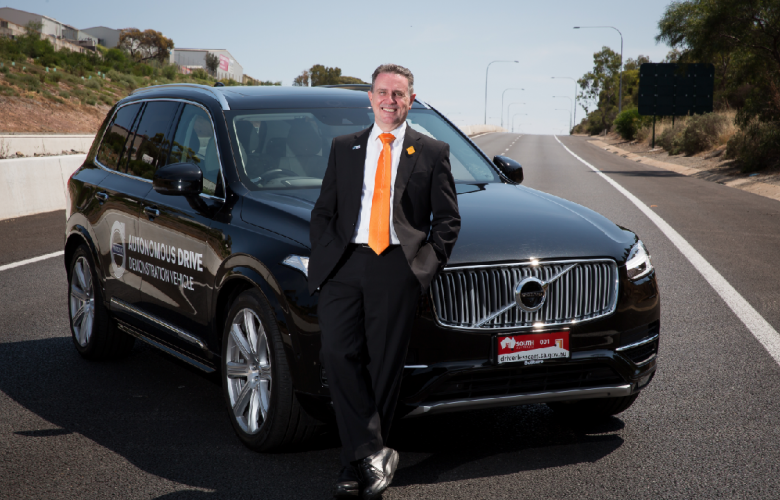Driverless cars essential feature of future cities
Contact
Driverless cars essential feature of future cities
Driverless cars will be on our roads within five years, says Gerard Waldron of the Australian Road Research Board.
Cars won’t have steering wheels within a decade, according to Gerard Waldron, Managing Director of the Australian Road Research Board.
Within five years, driverless vehicle will be on the road, and within 20 years all vehicles will be driverless, believes Waldron.
"Somewhere 10 years from now I think we’ll see cars hitting the road that don’t have a steering wheel and they’ll be more or less part of the public transport service," he said.
Waldron believe that within 20 to 25 years, cars will be completely driverless. “I’d say it will be 20 to 25-plus years before there is no intervention at all,” he said, but added, “The Google car operates at that level now, so the technology at a prototype level is already demonstrable.”
The technology
“Driverless cars in the near term will be semi-autonomous for short parts of the journey on roads that exist now and will take advantage of line marking and road geometry that already exist,” said Waldron.
“Already there are cars being delivered into Australian that have what we call level two automation, where the driver is meant to remain in charge the whole time but the car provides a fairly high level of automated assistance for the driver,” he said.
These cars will alert you if you’re wandering out of your lane, and correct the car. These cars also have automated emergency braking, which will be activated when the car recognises you’re likely to run into the car in front of you.
“There are technologies like that that are already on cars that are being delivered in Australia now,” he said. Waldron said those technologies are already legal to use and don’t require any additional legislation.
Level three automation is where “all of those technologies form the building blocks of an operation where the driver can be disengaged from the driving task for at least part of the time,” said Waldron.
Efficiencies
Waldron says there are valuable efficiencies to be gained from driverless cars.
“Theoretically you should be able to narrow the lane width when you have predominantly driverless cars on the roads,” he said.
“They’ll drive more precisely and with the reduction in lane width and the reduction in headway between the cars, because they won’t run into one another because they’re intelligent enough to talk to one another, so you can actually put a lot more traffic through a given road easement.”
He said congestion periods could be managed more efficiently. “The benefit of connecting cooperative systems and vehicle-to-cloud and cloud-to-infrastructure communication systems is that you will be able to do things like optimize congestion periods. You can provide information such as price signals to the users of the road to ensure you get the best possible performance out of the road.”
Waldron believes pricing will be an essential component of the driverless car economy.
“If you don’t provide any incentive for people to use the asset efficiently, it’s everybody for themselves,” he said. “If you want to join the queue getting onto the freeway at peak period, you’ll pay a premium, compared with being an hour either side of it.”
Trials
Waldron said that in early 2017, Volvo is going to put 100 driverless cars on the road in Gothenburg, Germany. The cars will be used by the general public to commute to work and for normal daily purposes. For the portion of their journey that is on the Gothenburg Ring Road, the drivers will be able to engage ‘driverless mode’, “where they aren’t required to pay any attention to what the car is doing,” said Waldron
Waldron said the Australian Driverless Vehicle Initiative demonstrated the technology in Adelaide last November with Volvo cars. They made a minor software update to the current delivery Volvos, and the vehicles were able to operate in driverless mode on the Adelaide expressway.
“We closed the road,” clarified Waldron. “But in Gothenburg in 2017 the driver can be completely disengaged from the task while the car is on the freeway – and read a book,” he said.
Waldron says over time, the range of roads and circumstances available to driverless cars will gradually increase. “We won’t be just restricted to the urban freeway,” he said, “you’ll be able to get out onto the more major highways and then into the minor roads.”
But he added, “It’ll be a little while before the vehicle will be allowed to drive through the lanes of Melbourne.”
Driverless cars in Australia
Waldron says the authorities are on board. “The National Transport Commission has a project underway at the moment which is looking at the regulations, and what sort of vehicles and what sorts of infrastructure will be necessary for autonomous vehicle operation in cities and Australian roads in general,” he said.
Governments are looking at long-term infrastructure problems, such as how to manage congestion, said Waldron.
“We recognize that we’re not going to build our way out of congestion, and it’s really a matter of not building more roads and railways, but maximizing what we’ve got,” he said.
ADVI has 60 member bodies covering a wide range of interests, says Waldron, including insurance companies, government bodies, consulting companies, and infrastructure providers.
“This is the biggest change to transport in a hundred years, and it really needs that breadth of participation to get the optimum result,” said Waldron.
Waldron said autonomous vehicles will be important for freight transport, and an essential part of planning 30-minute cities.
He believes that in a decade or so, we’ll all have a mobility provider that supplies us with transport. Driverless vehicles will operate as part of a private fleet to transport you to the train station, office, or supermarket. “It will be acting like a public transport system,” said Waldron.
“We need to encourage the development of this opportunity along the lines that will be of maximum benefit to the community,” he said.
These 'mobility providers' will offer various levels of service, for example you might opt for a cheap and cheerful service, where you share rides to the train station, or you might choose a more luxurious level of service, that provides you with a door-to-door ride with no other passengers and a more comfortable car.
Hurdles
Waldron said there are still some hurdles to overcome. He worries that regulations and legislation could hold up development of the technology with red tape.
Waldron says the ADVI is already working with three state governments and one federal government department to develop the regulations necessary for driverless cars.
“We’re working very closely with those departments already,” he said.
He said the problem of how the technology interfaces with the human also hasn’t been solved, although he explained, “the problems will diminish when humans don’t drive anymore.”
But Waldron is optimistic about the future of the driverless car. “The national economic benefits are so enormous I would suggest it should appear as a priority itself in due course,” he said.
Read more:






